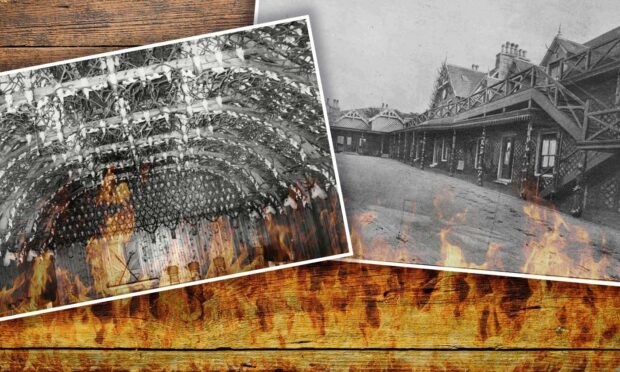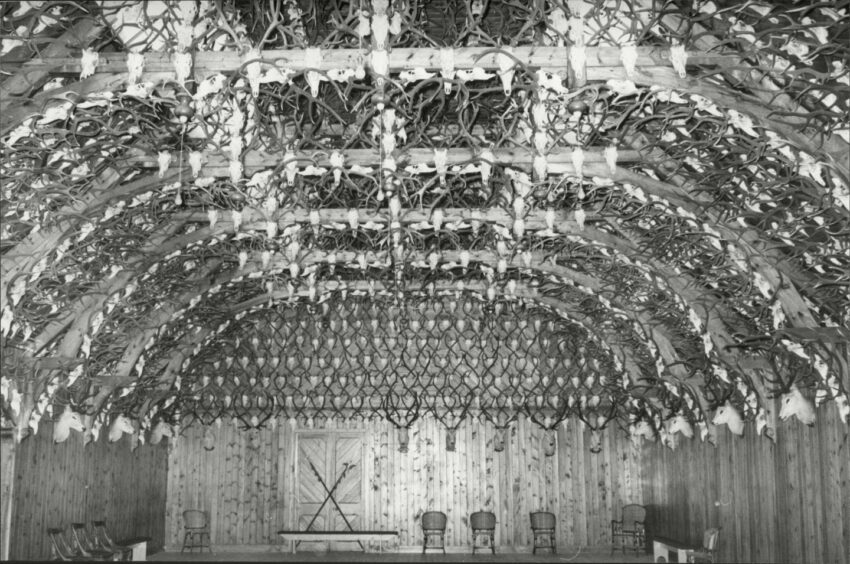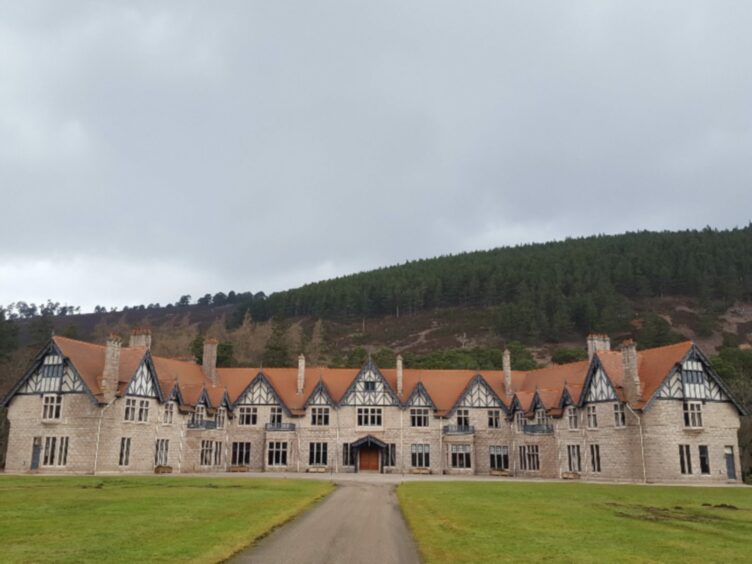The loss of the Braemar Lodge Hotel to fire is heart-rending for the owners, past and future guests and the village itself.
The modest 8-bed shooting lodge, built in 1870, was a far less showy feature of the village than the grand hotels, such as the Fife Arms and the Invercauld Arms.
They were patronised by royalty, aristocracy and the very wealthy in their Victorian and Edwardian hey-days, whereas little is recorded about the comings and goings at Braemar Lodge.
It’s not the first hotel in the area to have been gutted by fire though.
New Mar Lodge, the sporting lodge built for the Duke and Duchess of Fife, was completely destroyed by fire on June 14, 1895.
It was built in the 1820s by the Duke’s grandfather, General Sir Alexander Duff, and was festooned with antlers and prominent lattice-work along with tree trunk supports, some of which survived and are used in the present lodge.
It must have been a tinder box.
The blaze originated in the Duke’s room, from an unknown cause.
It was the more terrible because there was no organised fire brigade at the time.
The Duke’s workers first tackled the blaze, led by Mr Grey his overseer, Mr MacDonald the builder and other employees.
Battling in vain
They battled the flames in vain, and soon tenants and men from the adjoining villages were arriving at the Lodge to help.
But their efforts proved useless when the water supply dried up at the critical moment.
The fire raged on, burning the lodge to the ground.
The men’s efforts turned to stopping it from spreading to the lavish tennis court and ballroom by cutting down trees in its path.
By now Queen Victoria had received word in Balmoral and she appeared with Princess Beatrice for a look, in some style, in a coach with outriders and ‘four beautiful greys’, according to one newspaper.
The tragedy had a personal edge for Victoria.
Her granddaughter Louise was the Duchess of Fife, daughter of Victoria’s son, the future Edward VII and Alexandra of Denmark, at that time Prince and Princess of Wales.
“Her Majesty was much affected by the sight of the ruins,” the newspaper went on.
“The magnificent clock on the west wing of the building was destroyed. This was the gift of HRH The Prince of Wales and was fitted last year by His Highness’s London jeweller, John Walker.
“It crumbled bit by bit and at last came down with a crash.
After almost 24 hours, the fire was contained
Most of the main pieces of furniture and the best pictures were saved, apart from one of the stag hunt, painted by Landseer himself onto the wall of the dining room.
The men tried to cut out the entire wall, but the flames forced them back.
A safe containing the Duchess of Fife’s jewellery and valuables was badly damaged, but its contents were thought to be preserved.
The private chapel, ornate, finely panelled and with a striking stained glass window, was lost.
The Duke had erected the window as a memorial to his mother Agnes, Duchess of Fife, grand-daughter of William IV.
House in ruins
The house was in ruins, but the tree-cutting saved the tennis court and the dairy.
The brave raggle-taggle firefighters saw one serious casualty, a plumber named James MacLean who was half-suffocated by smoke and badly burned before being rescued.
This was already the second Mar Lodge, the preceding one having been seriously damaged in the ‘Muckle Spate’ of 1829 and later demolished.
The third and current lodge also went up in flames during renovation in 1991, and was rebuilt.
And as for the ballroom the workers battled so hard to protect in 1895?
It did survive and was moved to its present site some three years later, where the interior is virtually unchanged and boasts nearly 2,500 stags heads lining the walls and ceiling.
You might enjoy this story:
Hair today, gone tomorrow: Victorian criminals used curling tongs to raid north hotel rooms


